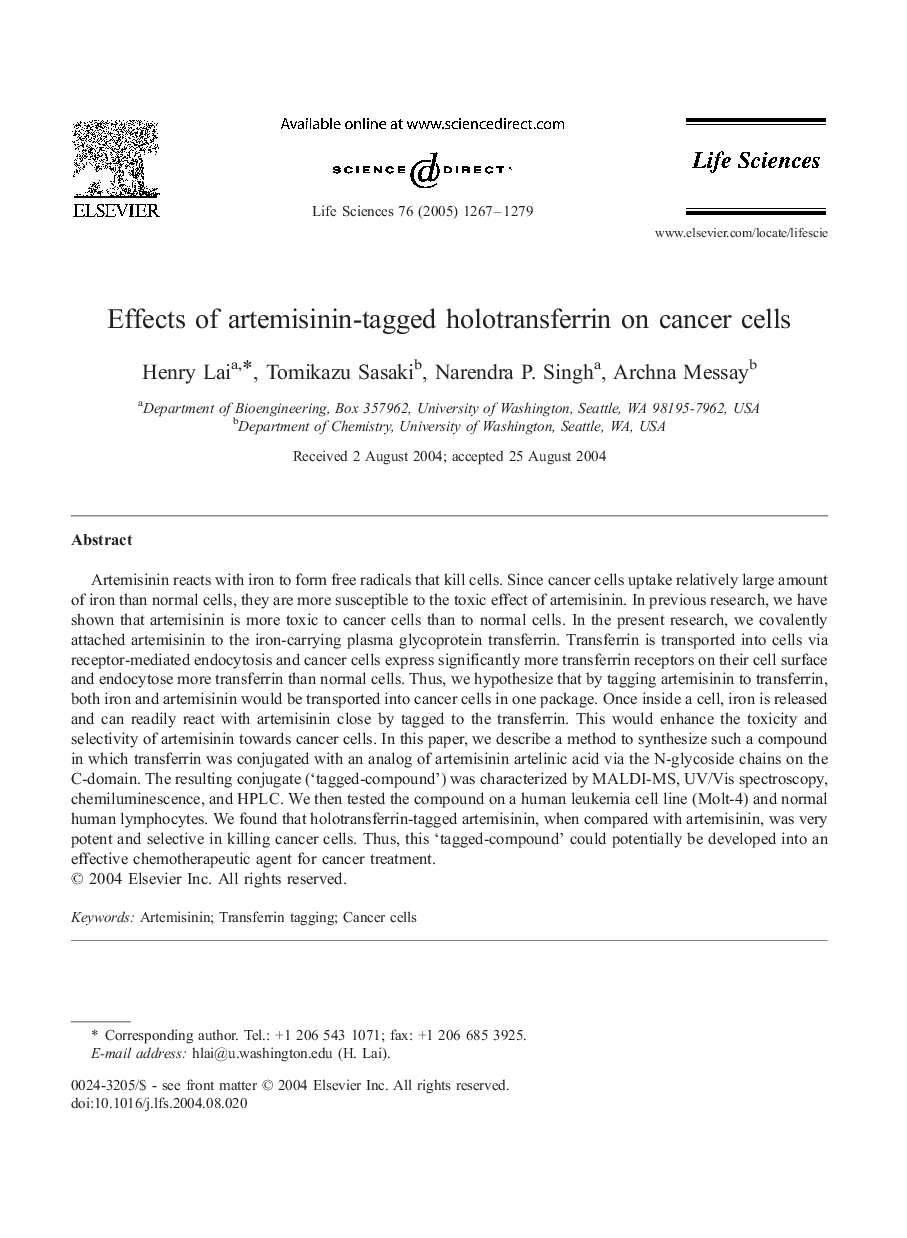| Article ID | Journal | Published Year | Pages | File Type |
|---|---|---|---|---|
| 9012977 | Life Sciences | 2005 | 13 Pages |
Abstract
Artemisinin reacts with iron to form free radicals that kill cells. Since cancer cells uptake relatively large amount of iron than normal cells, they are more susceptible to the toxic effect of artemisinin. In previous research, we have shown that artemisinin is more toxic to cancer cells than to normal cells. In the present research, we covalently attached artemisinin to the iron-carrying plasma glycoprotein transferrin. Transferrin is transported into cells via receptor-mediated endocytosis and cancer cells express significantly more transferrin receptors on their cell surface and endocytose more transferrin than normal cells. Thus, we hypothesize that by tagging artemisinin to transferrin, both iron and artemisinin would be transported into cancer cells in one package. Once inside a cell, iron is released and can readily react with artemisinin close by tagged to the transferrin. This would enhance the toxicity and selectivity of artemisinin towards cancer cells. In this paper, we describe a method to synthesize such a compound in which transferrin was conjugated with an analog of artemisinin artelinic acid via the N-glycoside chains on the C-domain. The resulting conjugate ('tagged-compound') was characterized by MALDI-MS, UV/Vis spectroscopy, chemiluminescence, and HPLC. We then tested the compound on a human leukemia cell line (Molt-4) and normal human lymphocytes. We found that holotransferrin-tagged artemisinin, when compared with artemisinin, was very potent and selective in killing cancer cells. Thus, this 'tagged-compound' could potentially be developed into an effective chemotherapeutic agent for cancer treatment.
Keywords
Related Topics
Health Sciences
Medicine and Dentistry
Cardiology and Cardiovascular Medicine
Authors
Henry Lai, Tomikazu Sasaki, Narendra P. Singh, Archna Messay,
